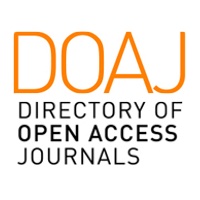GARLIC VARIETY MODEL DEVELOPED ON THE BASIS GENOTYPE COLLECTION OF THE UMAN NATIONAL UNIVERSITY OF HORTICULTURE
DOI:
https://doi.org/10.32782/2310-0478-2024-2-18-25Keywords:
commercial yield, bulb weight, essential oil content, storabilityAbstract
Purpose. To develop a model of a hardneck, softneck and spring garlic variety based on economic and valuable traits that focus on productivity, adaptability and manufacturability, which will contribute to increasing the productivity of the crop and the efficiency of the breeding process. Methods. The development of the garlic variety model was based on field research conducted in 2018–2022 in the educational and production department of the Uman National University of Horticulture. Field and statistical (correlation and regression) methods were used for research. As a result of research, a basic collection of 98 samples was developed, of which 58 were identified with the help of AHS. According to the results of the examination, the samples met the conditions of distinction, uniformity and stability, the other 40 samples did not meet these requirements. According to the results of the correlation analysis, a very strong relationship between yield and adaptability was found (r = 0.99±0.001 for hardneck, softneck and spring subspecies), a strong relationship between yield and bulb mass (r = 0.84±0.006 for hardneck, 0.91±0.003 for softneck, 0.85±0.006 for spring subspecies), yield and growing season (r = 0.83±0.007 for hardneck, 0.78±0.003 for softneck, 0.70±0.005 for spring subspecies). It was established that during the development of the Allium sativum L. subsp. Sagittatum, the selection work should be aimed at precociousness, that is, select medium and precocious samples (with a vegetation period of up to 115 days) and yield of 14.03 t/ha and more. To create a softneck garlic variety (Allium sativum L. subsp. Vulgare), it is necessary to select early-ripening samples (with a vegetation period of up to 95 days) and yield of at least ≤14.52 t/ha. In the selection of spring garlic (Allium sativum L. subsp. Vulgare it is necessary to select pre-ripened samples (with a growing season of up to 100 days) and a yield of at least ≤6.04 t/ha. All subspecies of garlic also have an increased content of dry matter and essential oil. Conclusions. Of the samples of the basic collection, genotypes with improved productivity and quality indicators were selected, namely: varieties Dzhovanna, Apollon – suitable for wide implementation and promising samples for further selection: A.s.25/16; A.s.40/16; A.s.16/16; A.s.44/17; A.s.33/16; A.s.35/16; A.s.43/17; A.s.44/17; A.s.51/17; A.s.52/17; A.s.54/17; A.s.55/17; A.s.56/17.
References
Solanki I., Yadav S.S., Bahl P.N. Varietal Adaptation, Participatory Breeding and Plant Type. In: Yadav, S.S., McNeil, D.L., Stevenson, P.C. (eds) Lentil. Springer, Dordrecht. 2007. pp 255–274. https://doi.org/10.1007/978-1-4020-6313-8_16.
Rawandoozi Z., Hartmann T., Byrne D., Carpenedo S. Heritability, Correlation, and Genotype by Environment Interaction of Phenological and Fruit Quality Traits in Peach. Journal of the American Society for Horticultural Science J. Amer. Soc. Hort. Sci., 2021, 146(1), 56–67, https://doi.org/10.21273/JASHS04990-20
Demydov O., Zamlila N., Novytska N., Kirilenko V., Miliar B. Assessment of the stability of common winter wheat breeding lines in multi-environment tests. Scientific Horizons, 2024, 27(7), 62–74. doi: 10.48077/scihor7.2024.62.
Osuna-Caballero S., Rispail N., Barilli E., Rubiales D. Management and breeding for rust resistance in legumes. J Plant Pathol., 2024, https://doi.org/10.1007/s42161-024-01679-z
Kang M.S. Breeding: Genotype-by-environment interaction. Encyclopedia of plant and crop science, 2004, P. 218–221.
Malosetti M. The statistical analysis of multi-environment data: modeling genotype-byenvironment interaction and its genetic basis. Frontiers in physiology, 2013, 4, P. 44.
Bornhofen E. Statistical methods to study adaptability and stability of wheat genotypes. Bragantia, 2017. 76. P. 1-10.
Osei M. K., Annor B., Adjebeng-Danquah J. Genotype× Environment interaction: a prerequisite for tomato variety development. Recent Advances in Tomato Breeding and Production. – Intech Open, 2018. 112.
Bocianowski J., Nowosad K., Rejek D. Genotype-environment interaction for grain yield in maize (Zea mays L.) using the additive main effects and multiplicative interaction (AMMI) model. J Appl Genetics, 2024, https://doi.org/10.1007/s13353-024-00899-4.
Williams R.M., O’Brien L., Eagles H.A. The influences of genotype, environment, and genotype×environment interaction on wheat quality. Australian journal of agricultural research, 2008, B. 59(2), 95–111.
Snowdon R.J., Wittkop B., Chen TW., Stahl A. Crop adaptation to climate change as a consequence of long-term breeding. Theor Appl Genet, 2021, 134, 1613–1623. https://doi.org/10.1007/s00122-020-03729-3.
Aboye, B.M., Edo, M. Exploring genotype by environment interaction in sunflower using genotype plus genotype by environment interaction (GGE) and best linear unbiased prediction (BLUP) approaches. Discov Appl Sci., 2024, 6, 431. https://doi.org/10.1007/s42452-024-06136-1.
Васильківський С.П. Кочмарський С.В. Селекція і насінництво польових культур: Підручник. ПрАт «Миронівська друкарня», Миронівка, 2016. 376 с.
Яценко В. В. Адаптивна мінливість часнику озимого і біологізація технології вирощування: монографія. Дніпро: Середняк Т.К., 2021. 179 с.
Яценко В.В. Господарсько-біологічне оцінювання сортозразків часнику озимого. Таврійський науковий вісник. Вип. 106, 2019. С. 163–172.
Jeuffroy M.H., Casadebaig P., Debaeke, P., Chantal L., Meynard J.M. Agronomic model uses to predict cultivar performance in various environments and cropping systems. A review. Agron. Sustain. Dev., 2013, 34, 121–137. https://doi.org/10.1007/s13593-013-0170-9.








